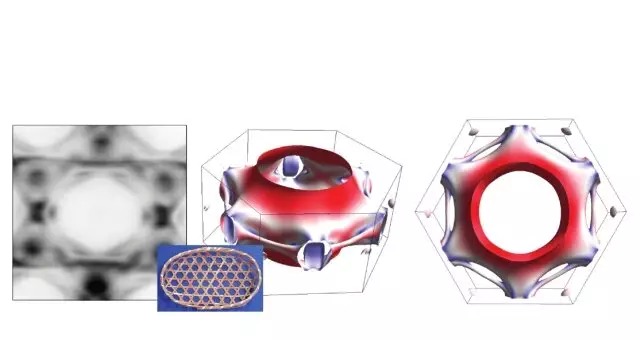A team of international researchers has made a groundbreaking discovery in quantum materials by measuring the electron spin in matter for the first time. The findings, published in Nature Physics, open up new possibilities for quantum technologies that could have applications in renewable energy, biomedicine, electronics, and quantum computers. The team used advanced experimental techniques and modern modeling to measure electron spin in “kagome materials,” a new class of quantum materials that revolutionizes quantum physics.
Measuring Electron Spin in Kagome Materials
The team of international scientists included researchers from the University of Bologna, CNR-IOM Trieste, Ca’ Foscari University of Venice, University of Milan, University of Würzburg (Germany), University of St. Andrews (UK), Boston College, and University of Santa Barbara (U.S.). To achieve their groundbreaking discovery, the team used a particle accelerator, the Synchrotron, to generate light and measure electron spin in matter. They exploited a particular effect called “circular dichroism,” which can only be used with a synchrotron source, to measure electron spin related to the concept of topology.
The researchers focused on “kagome materials,” a class of quantum materials named after the weave of interwoven bamboo threads that make up a traditional Japanese basket. Kagome materials have special magnetic, topological, and superconducting properties that make them an exciting area of study for quantum physics. The team’s theoretical researchers used quantum simulations to guide their experimental colleagues to the specific area of the material where the circular dichroism effect could be measured.
Domenico Di Sante, a professor at the Department of Physics and Astronomy “Augusto Righi,” participated in the study as part of his Marie Curie BITMAP research project. He explains that the behavior of electrons in materials is influenced by certain quantum properties that determine their spinning in the matter in which they are found, similar to how the trajectory of light in the universe is modified by the presence of stars, black holes, dark matter, and dark energy, which bend time and space. Although this characteristic of electrons has been known for many years, no one had been able to measure this “topological spin” directly until now.
The discovery of measuring electron spin in kagome materials opens up new possibilities for studying quantum materials in the future. The team’s success in measuring electron spin could revolutionize the way quantum materials are studied and developed, leading to new developments in quantum technologies.
Implications for Quantum Technologies
The team’s discovery could have significant implications for a variety of technological fields, from renewable energy to biomedicine, from electronics to quantum computers. Quantum technologies have the potential to transform industries, from medicine to finance, by providing faster and more efficient solutions to complex problems.
The team’s groundbreaking discovery could lead to the development of new quantum materials with special magnetic, topological, and superconducting properties that could be used in a variety of applications. For example, quantum materials could be used in renewable energy technologies to improve energy efficiency or in biomedicine to develop new treatments for diseases. Quantum materials could also revolutionize the electronics industry by providing faster and more efficient solutions to complex problems.
The team’s success in measuring electron spin in kagome materials paves the way for future studies of quantum materials. As researchers continue to study and develop new quantum materials, the possibilities for quantum technologies will continue to expand, providing new solutions to some of the world’s most complex problems.


Leave a Reply